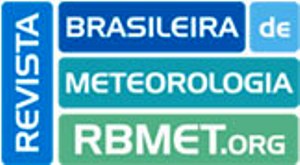Abstract
The present study applies computational intelligence techniques in the development of a hybrid model composed of Artificial Neural Networks (ANNs) and Genetic Algorithms (GAs) (MLP-GA) to estimate and fill in the gaps in the monthly variables of evaporation, maximum temperature and relative humidity to six regions in the state of Rio de Janeiro (RJ), Brazil. The results were evaluated using statistical techniques and compared with results obtained by the Multiple Linear Regression (RLM), Multilayer Perceptron (MLP) and Radial Basis Function (RBF) models and also compared with the data recorded by the weather stations. The correlation coefficient (r) between the evaporation estimates generated by MLP-GA with the recorded data showed a high relationship, remaining between 0.82 to 0.97. The average percentage error (MPE) ranged from 6.01% to 9.67%, indicating a accuracy between 90% to 94%. For the maximum temperature generated by MLP-GA the correlation with the recorded data remained between 0.97 to 0.99. It also presented the MPE between 0.95% to 1.57%, maintaining the accuracy of the estimated data between 98% to 99%. The correlation coefficient (r) between the relative humidity estimates generated with the MLP-GA remained between 0.89 a 0.97, the MPE between 1.15% to 1.89%, which guaranteed a rate higher than 98% of correctness in its estimates. Such results demonstrated gains in relation to the other applied models and allowed the accomplishment of the filling of most of the missing values.
Keywords
fault filling; Artificial Neural Networks; Genetic Algorithms

 Thumbnail
Thumbnail
 Thumbnail
Thumbnail
 Thumbnail
Thumbnail
 Thumbnail
Thumbnail
 Thumbnail
Thumbnail
 Thumbnail
Thumbnail
 Thumbnail
Thumbnail
 Thumbnail
Thumbnail
 Thumbnail
Thumbnail








